You recall the tree with the prickly bark if you’ve ever seen one. It appears to be both frightening and intriguing.
This is because just a few trees have this particular trait.
Though they may appear intimidating and unappealing to anybody who loves climbing trees, these prickly marvels have more to offer than spikes.
Table of Contents
What Are Some of the Trees That Have Spikes on Them?
- Silk Floss Tree
- Fachno Cactus
- Sandbox Tre
- Devil’s Walking Stick
- Chestnut
- Buckeye
- Sweet Gum
- Locust
- Holly
- Hawthorn
- Orange Tree
- Wild Plum
- Lemon Tree
- Pomegranate
- Wild Apple
- Wild Pear Tree
- Thorn Apple
- Thorn Acacias
- Crown of Thorn
- Flowering Quince
Ornamental
Silk Floss Tree
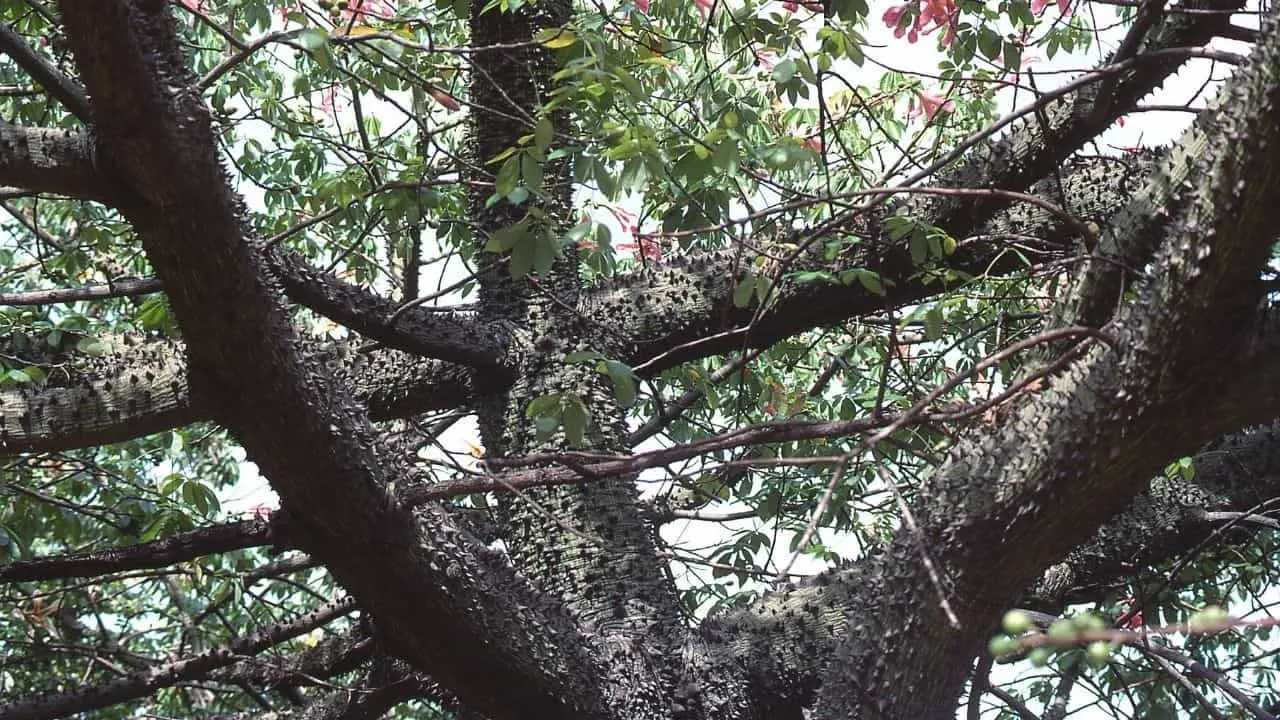
- USDA hardiness zone: 10 and 11
In South and Central America, the silk floss tree (Ceiba speciosa) is often called the inebriated stick or Palo borracho.
It’s known for its abundant pink flowers in the autumn and winter, as well as the spikes on its body and branches, and for having a canopy as wide as the tree‘s height up to 65 feet.
When immature, the silk floss tree‘s surface is flat, but it produces sharp spikes as it ages. The spikes on the trunk of the tree may diminish as the tree becomes older.
Fachno Cactus (Pereskia guamacho)
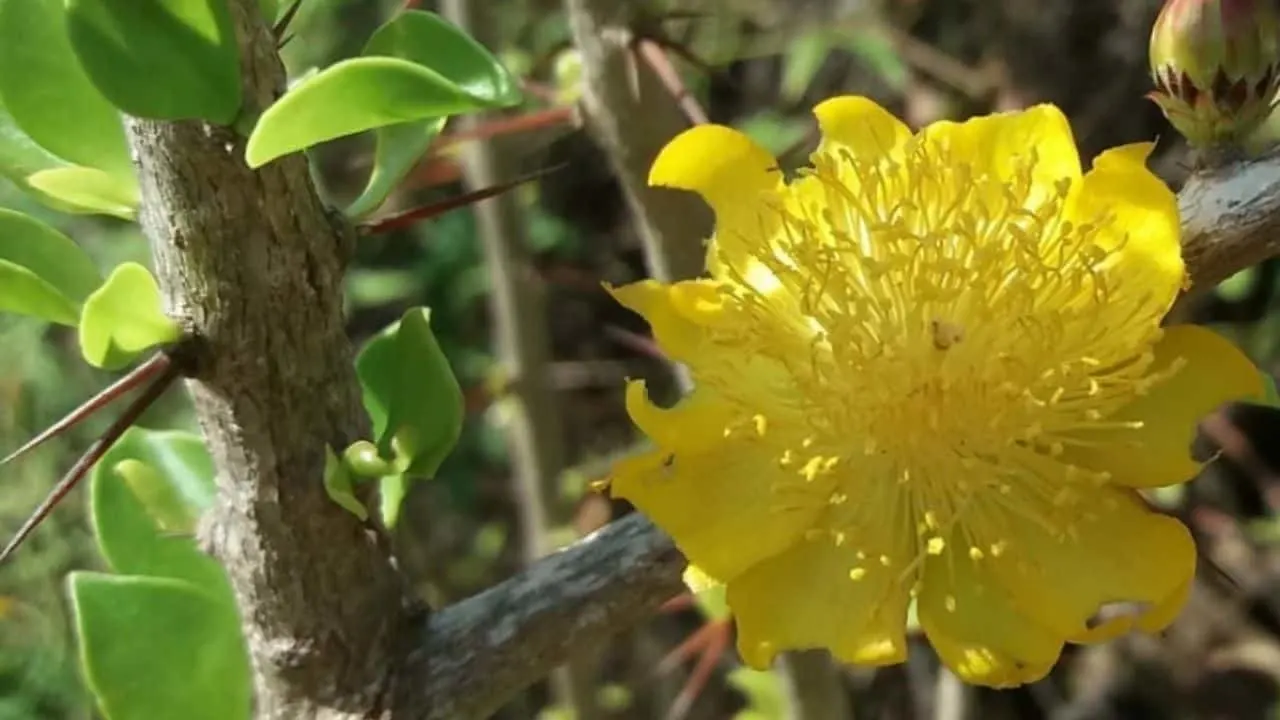
Photo Credit: @_hildegalde on Instagram!
- USDA hardiness zone: 9b through 11
The skin of the fachno cactus (Pereskia guamacho) transforms to bark, unlike that of other cacti.
The fachno is an old type of plant that develops like a tree or bush with spiky bark in the regions of South and Central America.
Although it was not classified as a perennial like regular cacti, the plant’s spikes are as sharp and needlelike as any cactus.
Tropical
Sandbox Tree (Hura Crepitans)
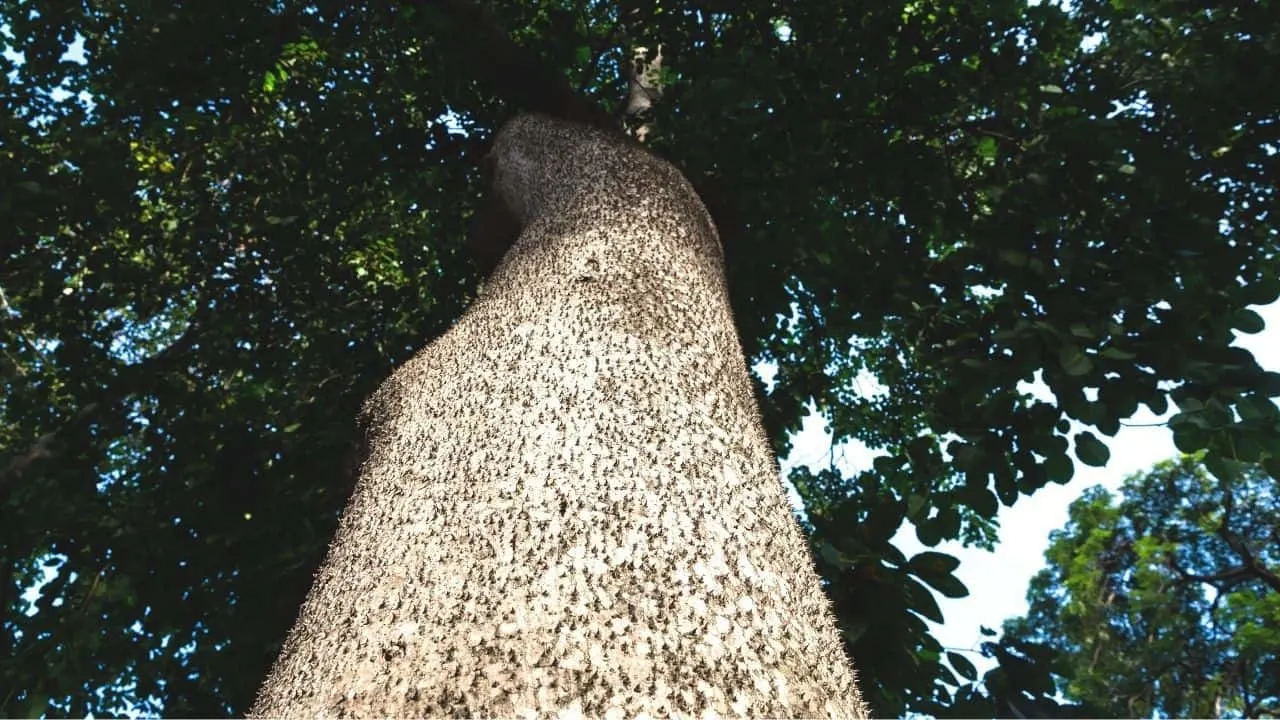
- USDA hardiness zone: 10 and 11
The sandbox tree (Hura Crepitans) is a prickly subtropical that may develop up to 100 feet tall and have a circumference of above 3 feet.
The spikes on the trunk and branches, often referred to as ‘monkey no climb’ for understandable reasons, are about half an inch broad.
Their bottom and tip are sharp, slightly curved ends more than 1 inch long.
The sandbox tree is known for its frightening spikes on its bark and its wooden seed capsules, which were originally employed as ‘sandboxes’ for blotting ink off pens in the ancient West Indies.
Wild-life Friendly
Devil’s Walking Stick (Aralia spinosa)
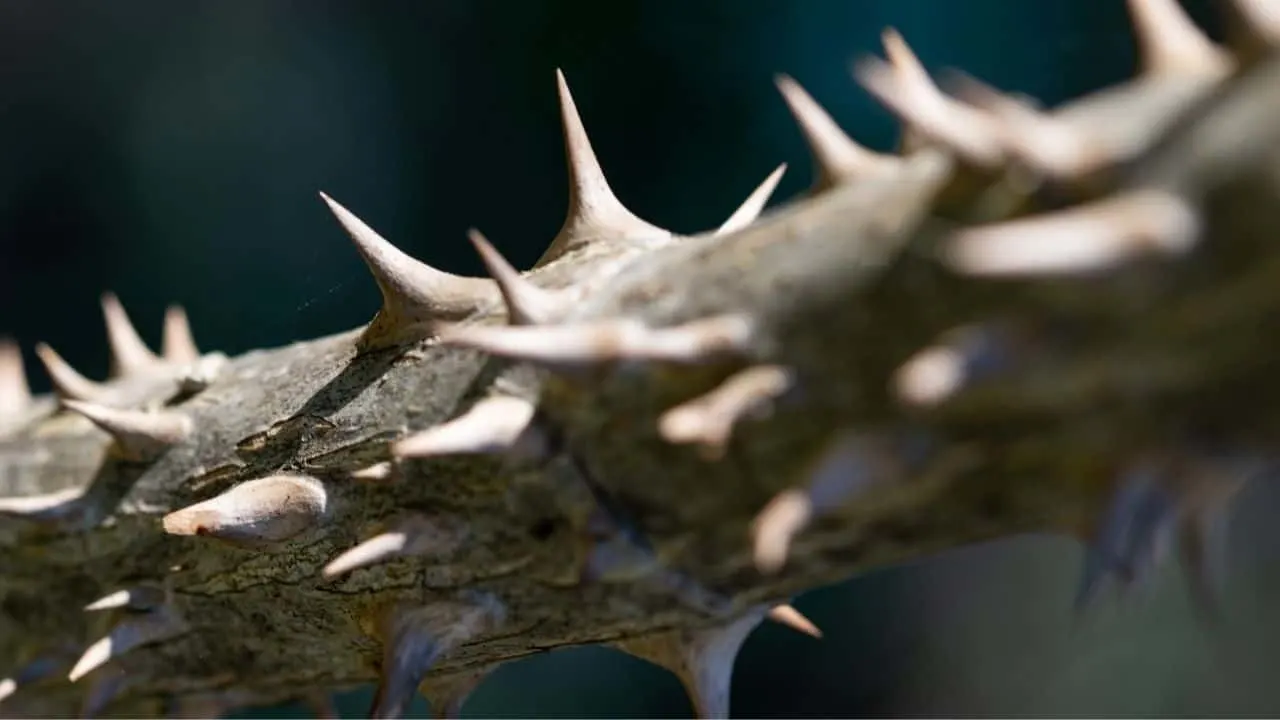
- USDA hardiness zone: 4 through 9
The devil’s walking stick (Aralia spinosa) is a medium-sized shrub featuring little orange thorns on its wrinkled stems and trunk. This plant’s also recognized as Angelica tree, Hercules’ club, or prickly ash.
It has huge, pinnate leaves that can grow up to 4 feet long and are surrounded by tiny spines.
The devil’s walking stick flowers in the summertime and bears black drupes that resemble little berries in the autumn.
Birds enjoy the fruit, deer enjoy the foliage, and bees are attracted to the tree‘s blossoms for pollen.
Trees That Have Spiked Seed Pods
Chestnut
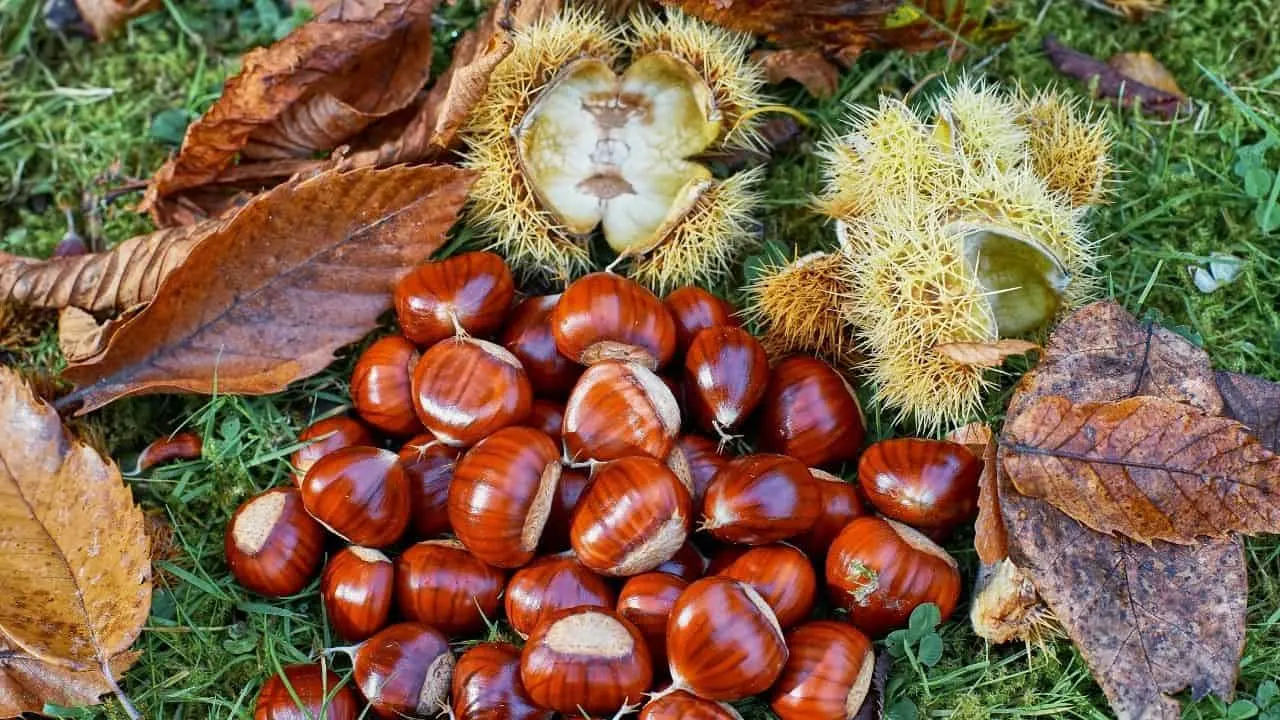
The American chestnut (Castanea dentata) was once one of North America’s most common natural trees, but a fungal blight killed out most of them.
Currently, crosses between the two different species, such as Chinese chestnut (C. mollissima), are more common.
- The chestnut’s leaves are oval in form and have a jagged edge.
- Yellow or bronze are the colors of the autumn season.
- Early summer, the green fruits emerge and stay on the tree through autumn.
- When the burs are ready, it splits open, exposing one to four delicious nuts within.
Buckeye
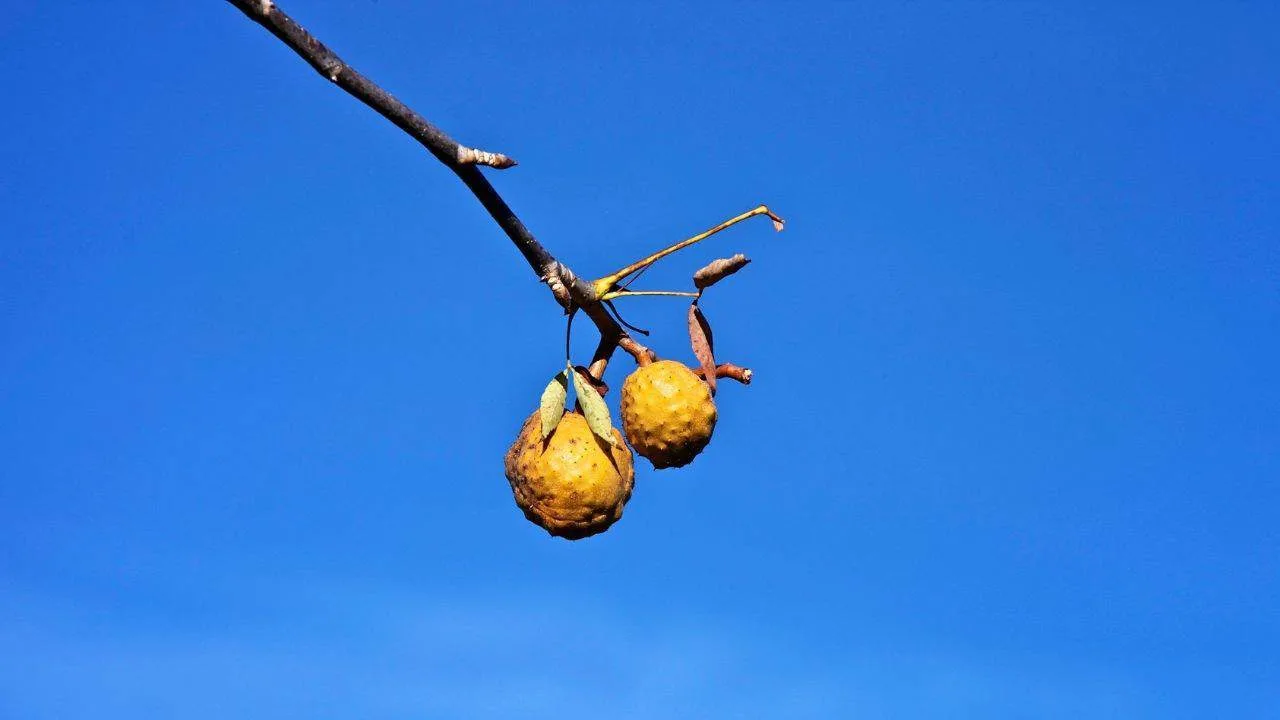
The Ohio buckeye (Aesculus glabra) is a small and medium tree 20-40 feet tall with five oval-shaped leaflets on compound leaves.
The nearly similar ordinary Horsechestnut (A. hippocastanum) grows 50-75 feet tall and has seven rather than five leaves.
- Horsechestnuts turn yellow or brown in the autumn, whereas Ohio buckeyes turn orange-red to reddish-brown.
- In the springtime, both have spectacular blooms that are joined by prickly or spiny pods that crack open in the fall, releasing one or two nuts inside.
- The nuts of Aesculus species, unlike authentic chestnuts, are harmful to humans if consumed.
Sweet Gum
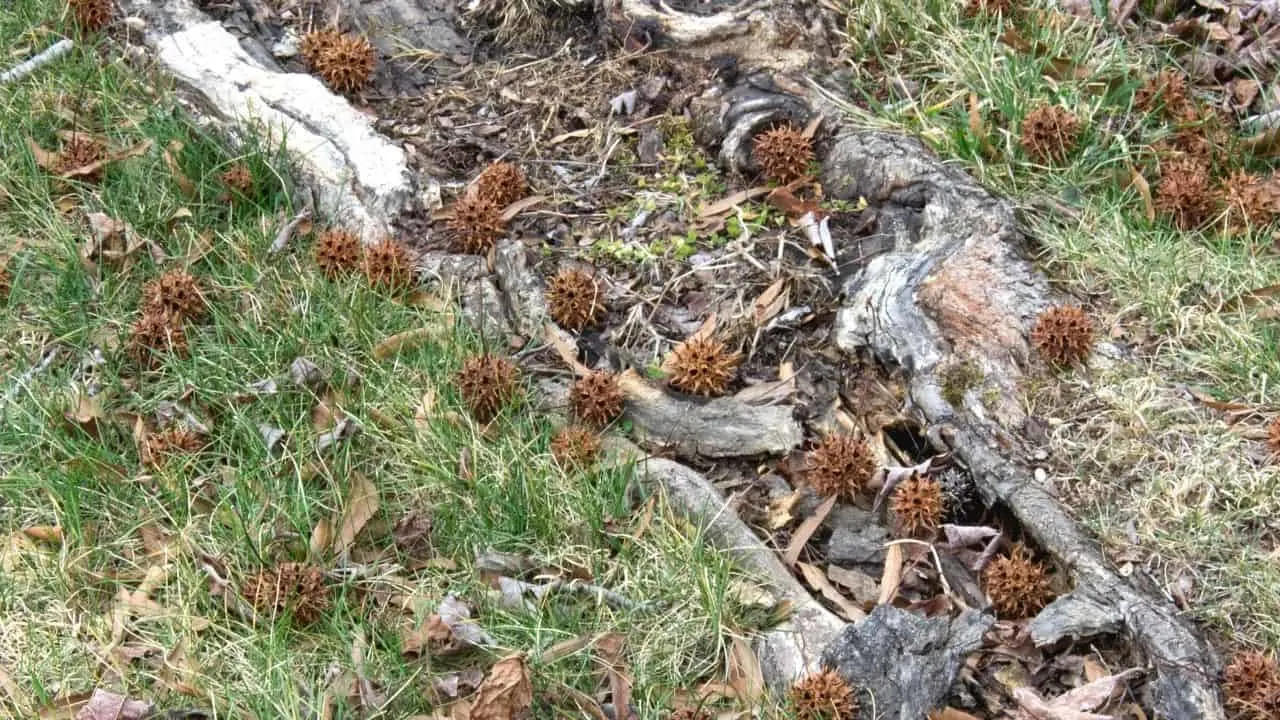
The prickly fruit can be used in crafts or as gardening compost to keep rabbits away.
If you’ve ever trodden on one barefoot, you know how painful it can be, and when they’re all over a yard, it can be tough to mow.
- Sweet gum, like sugar maple, is an indigenous shading tree with shiny green foliage with five lobes.
- With a blend of yellows, reds, and purples, fall color can be extremely spectacular.
- The tree can produce spiky green golf-ball-sized fruits that change color.
- Fruit drops off from the branch over a long period of time, starting in the autumn and lasting into the winter.
Famous Spiky Trees That Grow to Height Above 50 Feet
Locust
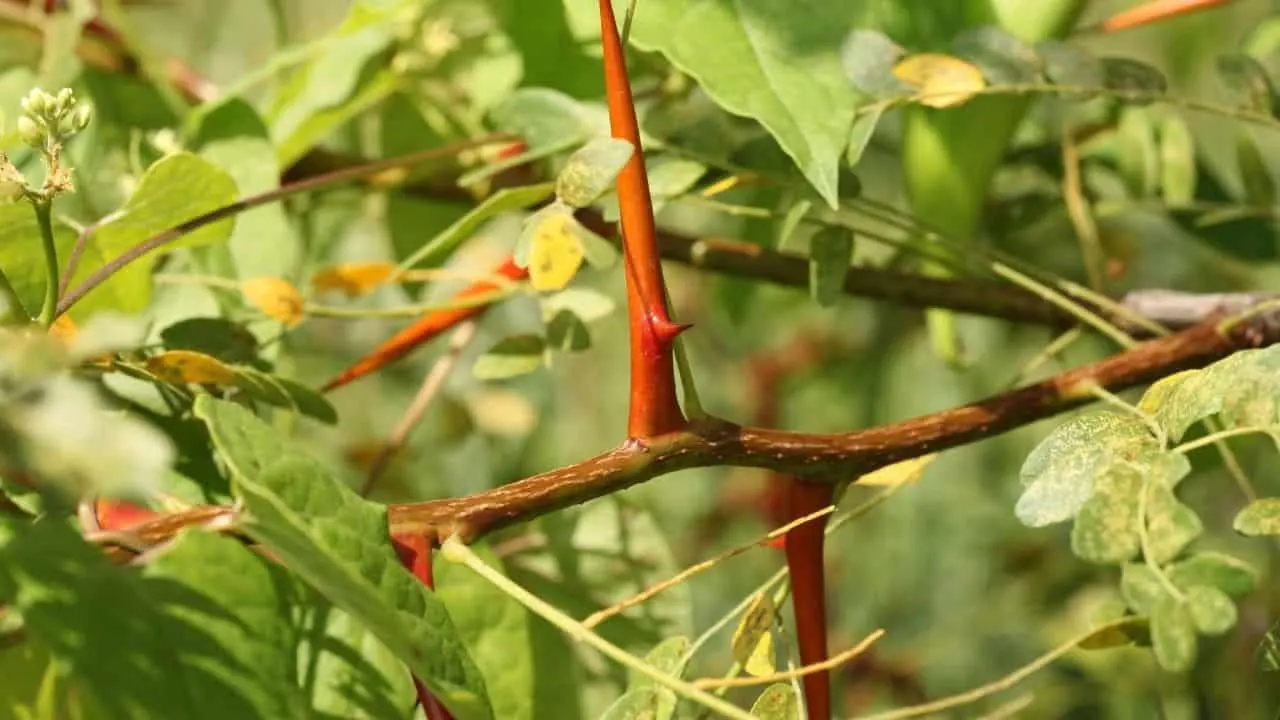
- Max height: 100 feet
There are two types of locust trees which are both coated in spikes:
- Black Locust
- Honey Locust
Both are enormous, albeit the black locust remains relatively narrow, whilst the honey locust can grow just about as broad as it is high.
Thorns blanket the branches of these trees, although they can also be found all the way down to the floor level on the trunks of immature trees.
Early spring, both trees produce bunches of honey-scented white blooms, which give way to fruiting bodies later in the year.
Amidst their spikes, locusts are frequently employed for shading.
- Once grown, they are robust and versatile, surviving in poor soils with little irrigation.
- Purple lilac-colored blooms and bronze-tinged leaves characterize Robe’s black locust.
- The honey locust Sunburst bears yellow leaves.
Holly
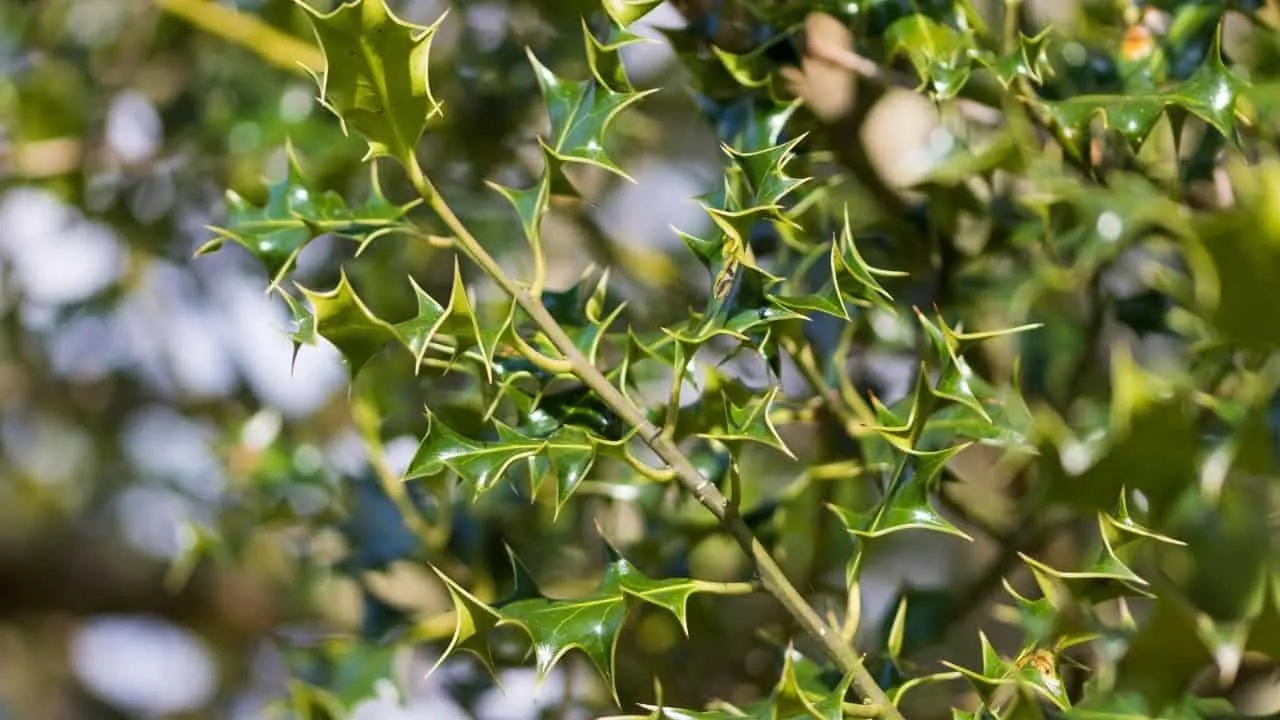
- Max Height: 50 feet or more
Although many people conceive of hollies as shrubs, this only applies to a few varieties.
The American holly, which grows naturally in the eastern United States, is widely employed as a specimen tree or a high fence in home settings.
These trees have spikes on their leaves, leaving it tough to get past when grown as a thick barrier.
They’re evergreen, have red berries in the wintertime, and are among the few trees of this height that can tolerate full shade.
- Hollies can endure full light but prefer acidic soil. In order to get fruits, it’s generally essential to grow more than one.
- Nellie Stevens is a relatively fast holly that grows in a towering pattern.
- The leaves of Argentea marginata are multicolored and have silver borders.
- Croonenberg is a self-fertile holly, which means it will bear fruit even if there isn’t another tree nearby.
Hawthorn
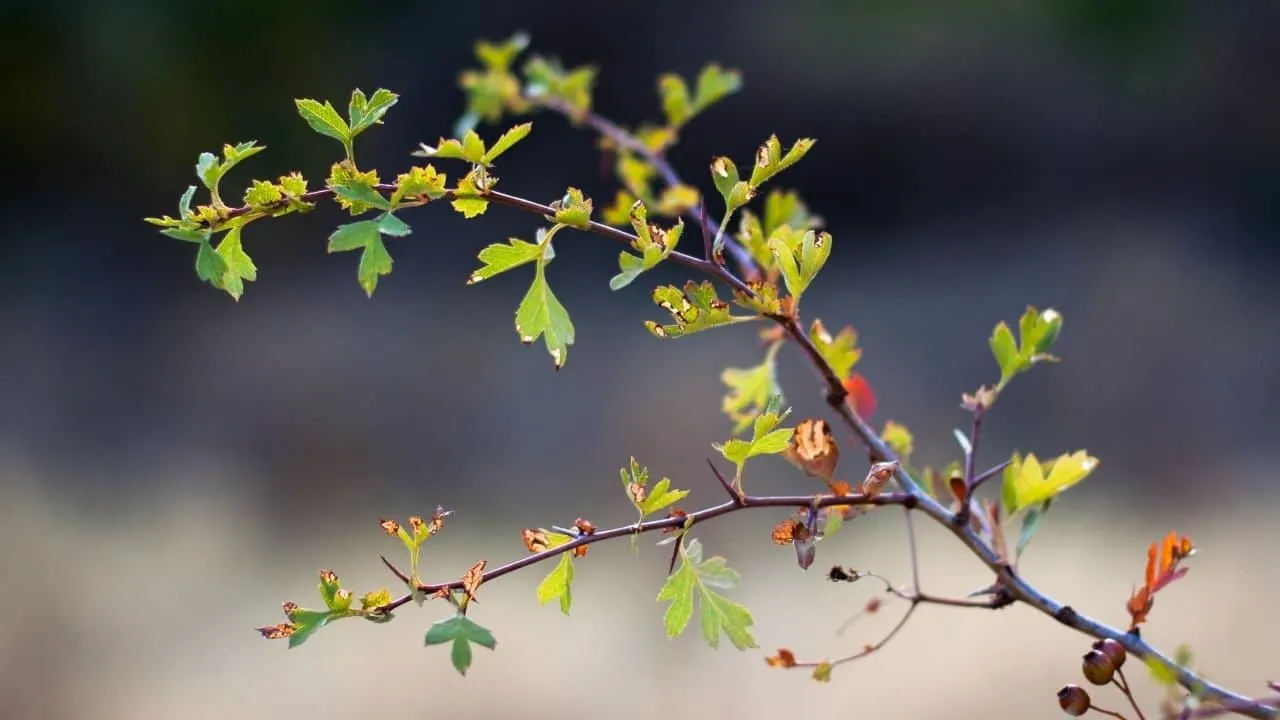
- Max Height: Starting from 12 feet and going above 50 feet
Based on the species, these perennial shrub trees can grow tall, with spikes on the stems that can be many inches long.
Hawthorn trees, on the other hand, yield an abundance of white blossoms in springtime.
It bears a delicious red fruit in certain varieties, such as the Mayhaw, but is tasteless in the majority.
There are a variety of enhanced varieties that are lovely blooming trees that can be used as a point of focus in tiny yards.
- The soil and water in a typical garden are adequate.
- Dripping branches can be found on Pendula.
- Stricta is a tall, thin cultivar with a slender growing pattern.
Fruit Trees that Fall Under the Category of Spiky Trees
Orange Tree
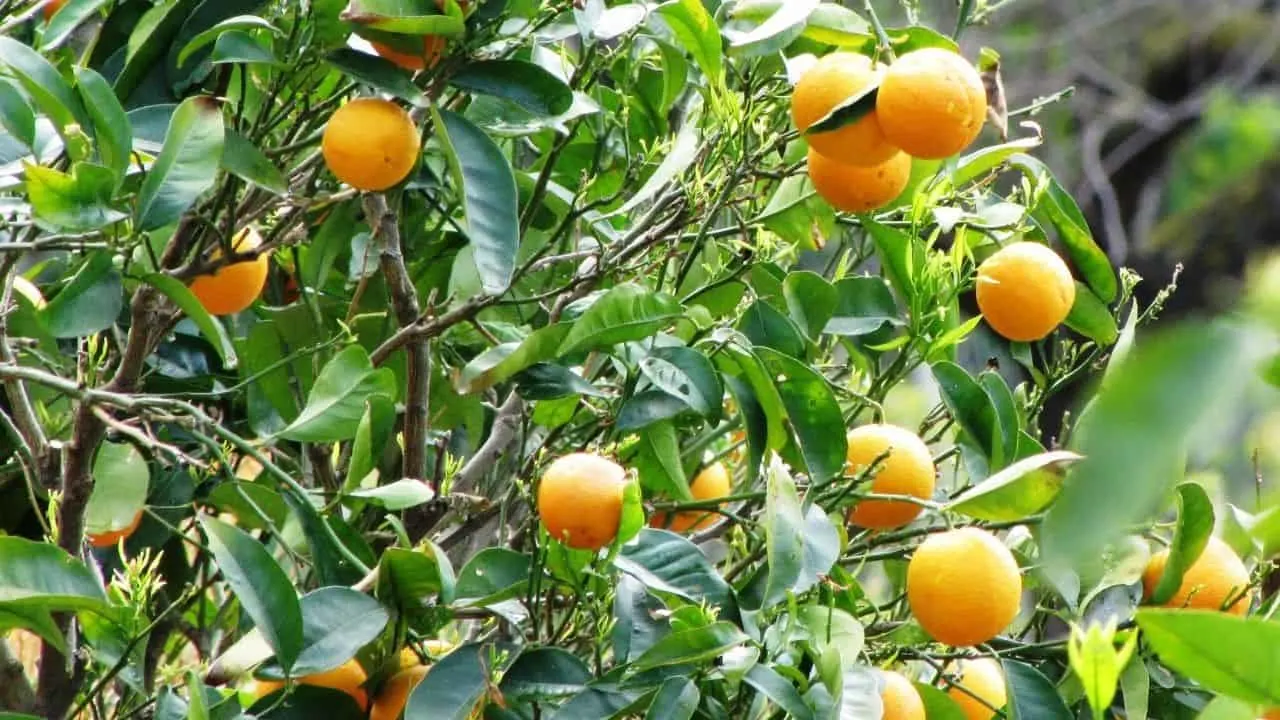
- The Trifoliata Orange is among the spikey orange trees.
- This plant’s an old species.
Wild Plum
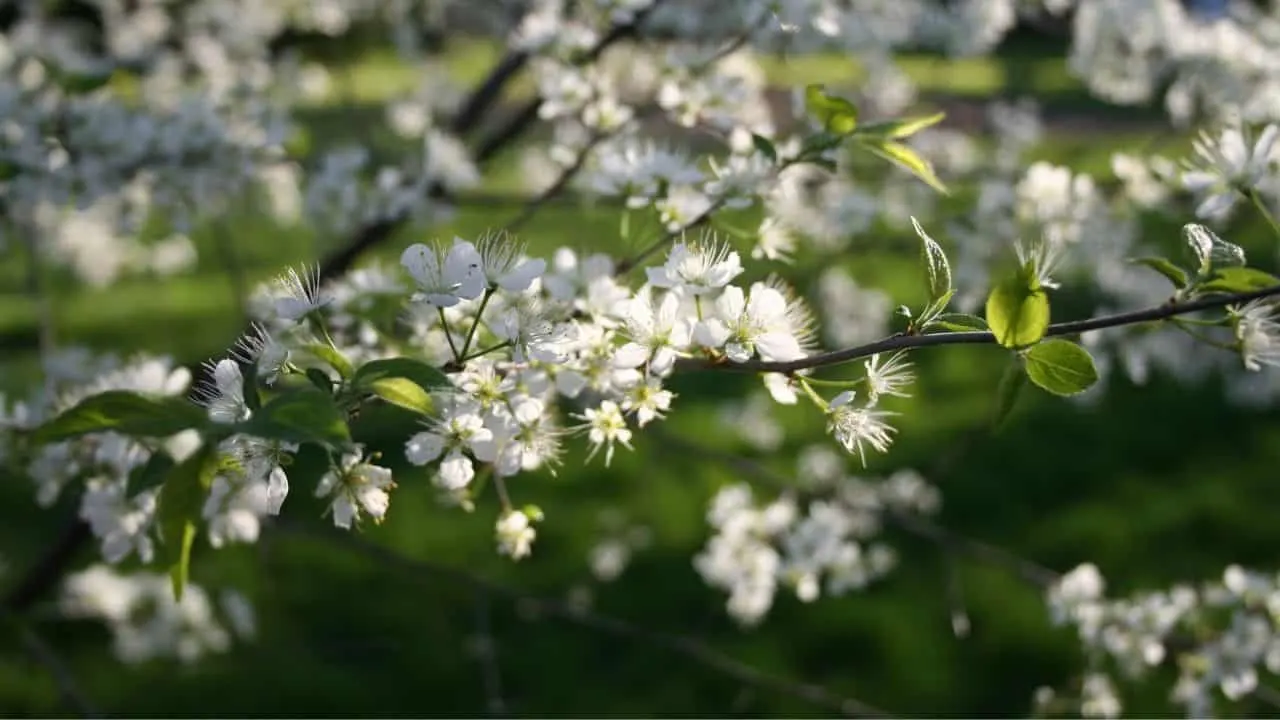
- Prunus Americana, or wild plum trees, are gregarious fruit trees that flourish in thick groups.
- Wild plums feature spikes to deter people from harvesting their fruits, making them less social than other kinds.
Lemon Tree
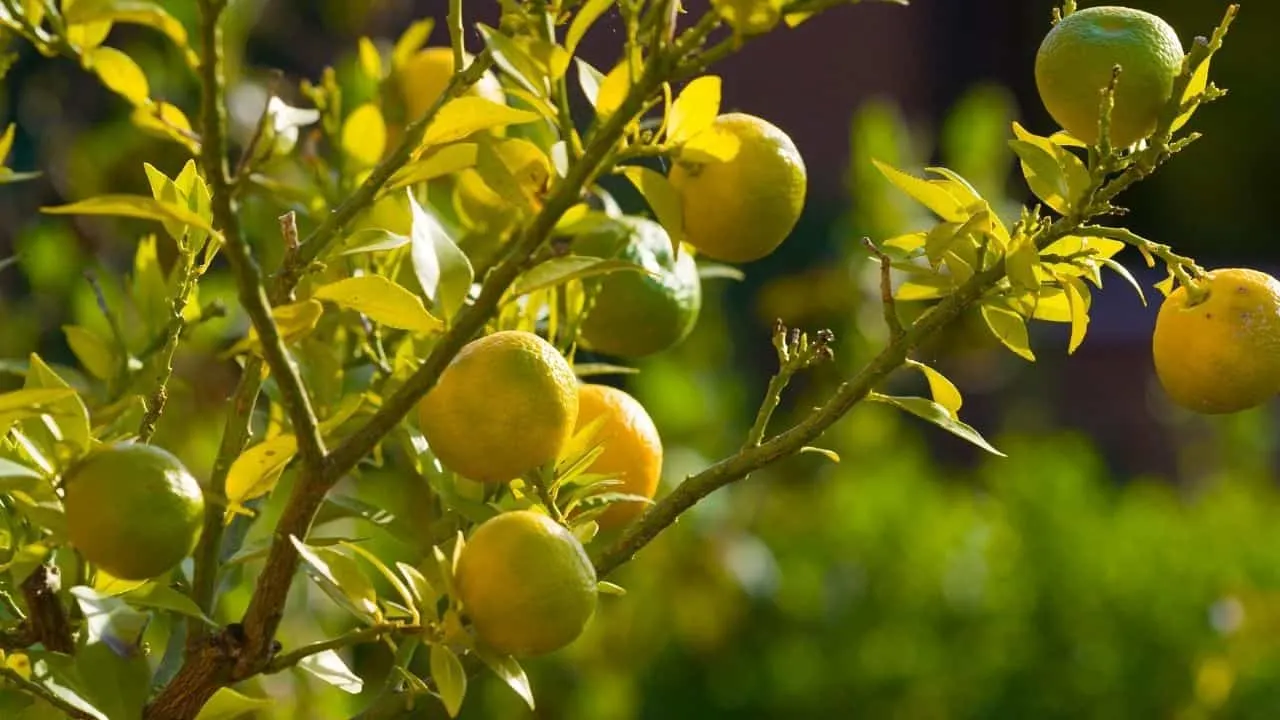
- You will certainly find spikes on the lemon tree.
- If you have a tree that has been deliberately maintained over centuries to remove the hostile characteristics and produce larger, more tasty fruit, you might not think so.
- Even the most fostered lemon tree, though, may have a spike or two hiding among the lush foliage and fragrant flowers.
Pomegranate
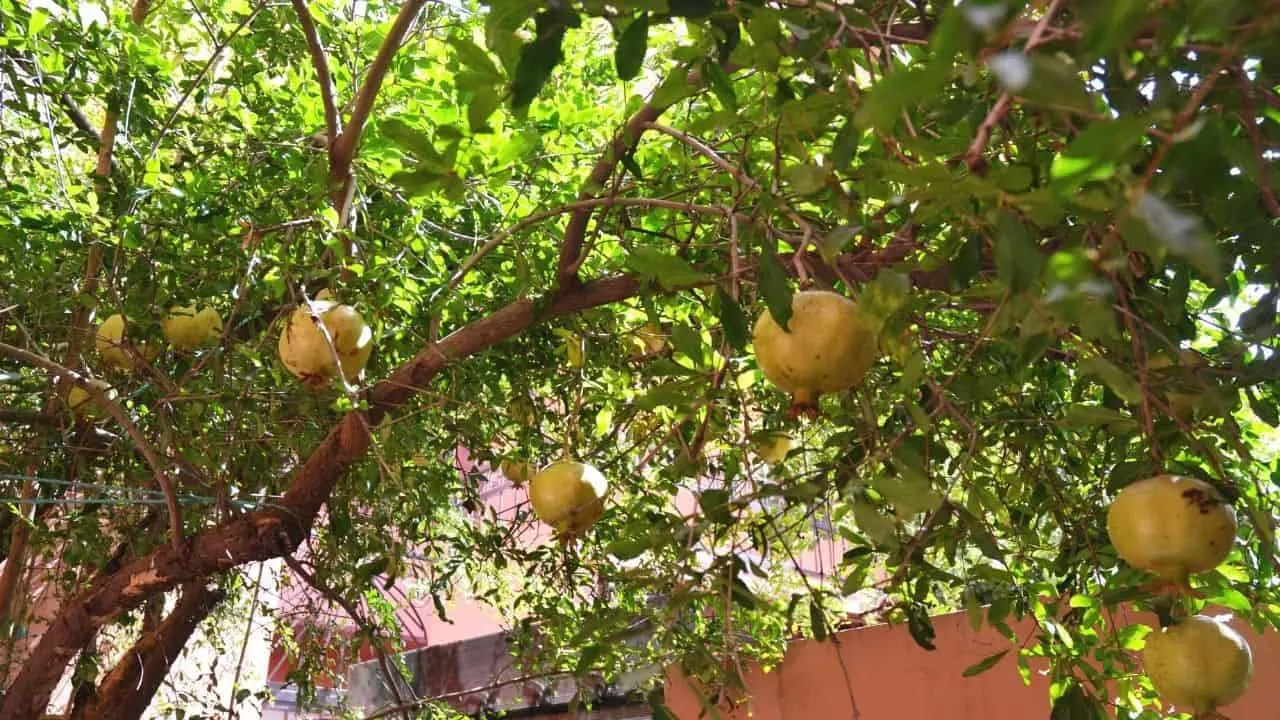
- This little tree, which can sometimes be mistaken for a bush, bears a wonderfully seedy fruit that is protected by spikes.
- The pomegranate is a fruit that evolved in Persia but has grown in popularity in Western countries as more individuals learn about its health benefits.
Wild Apple Tree
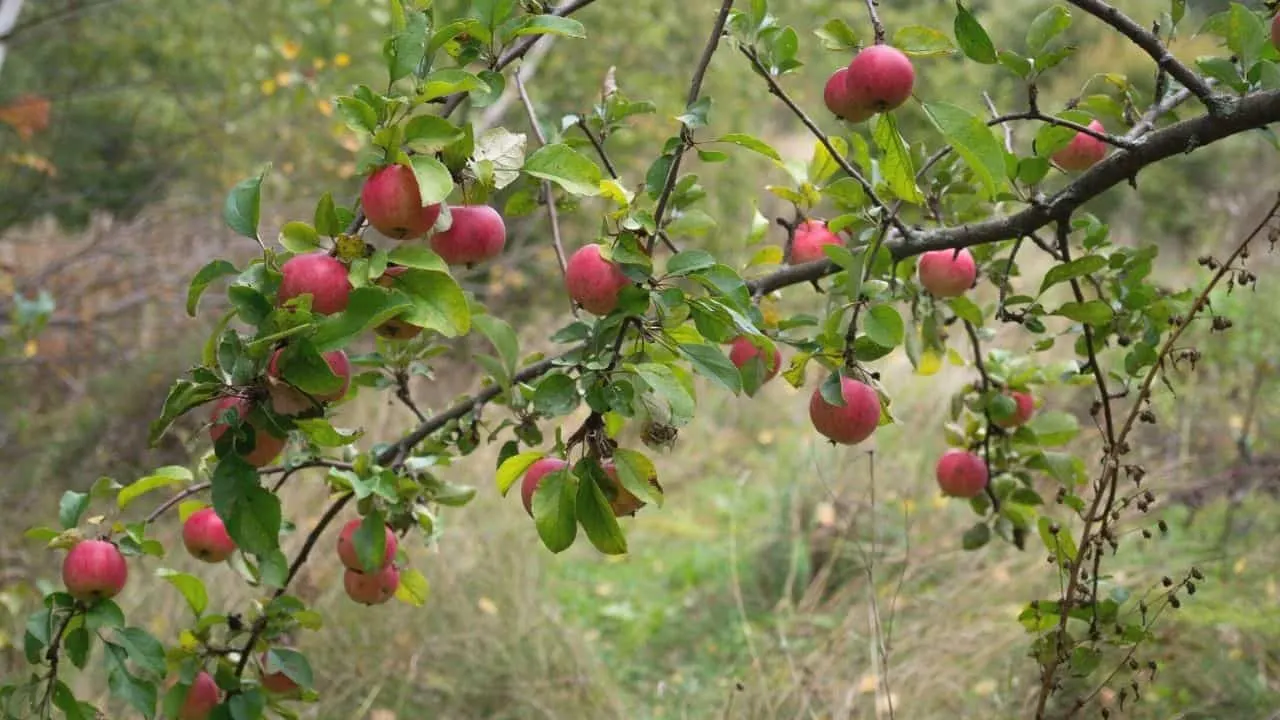
- You’ve undoubtedly spotted a wild apple tree if you come across an apple tree in the forest, except if it thrives amid the ruins of a historic farmhouse.
- As a result, the wild apple will have spikes, which have helped it to survive for centuries.
Wild Pear Tree
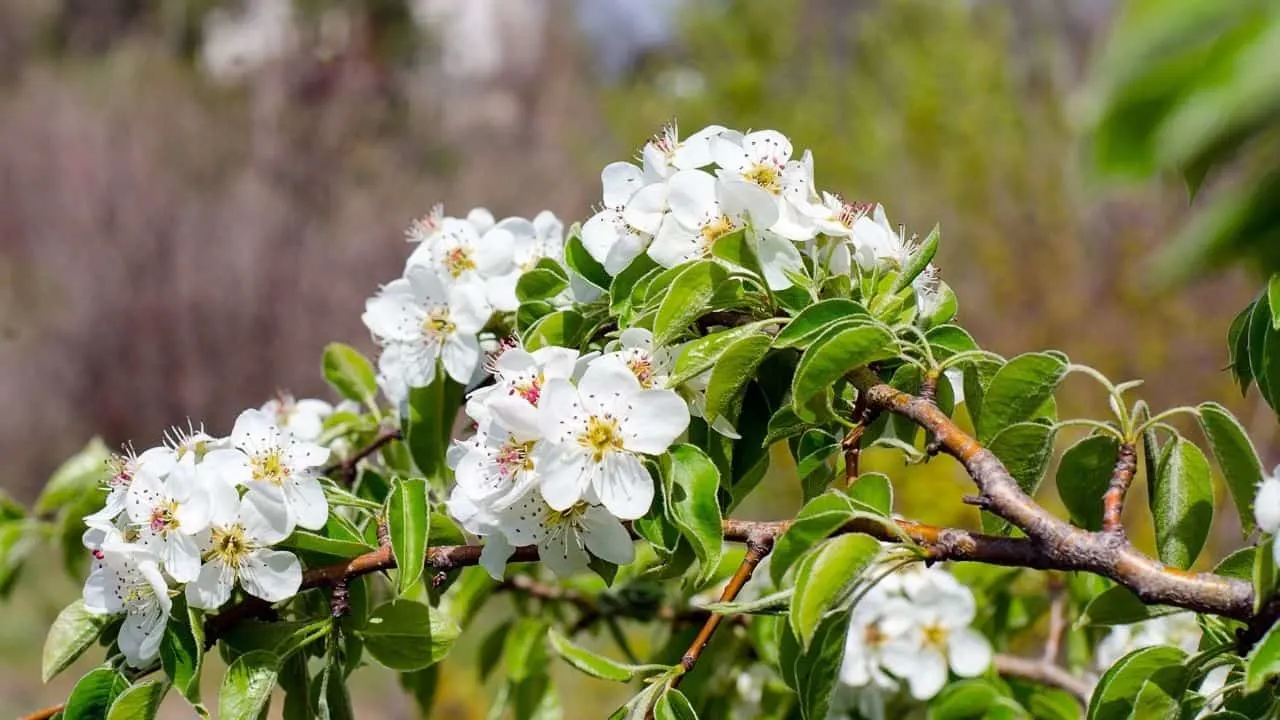
- Similar to wild apples, wild pears also have spikes.
- The pear is among the few fruit trees that can flourish itself when seeded and left to develop without human assistance.
- It’s no surprise that they have an armory of spikes to fight off invading cutters.
Thorn Apple
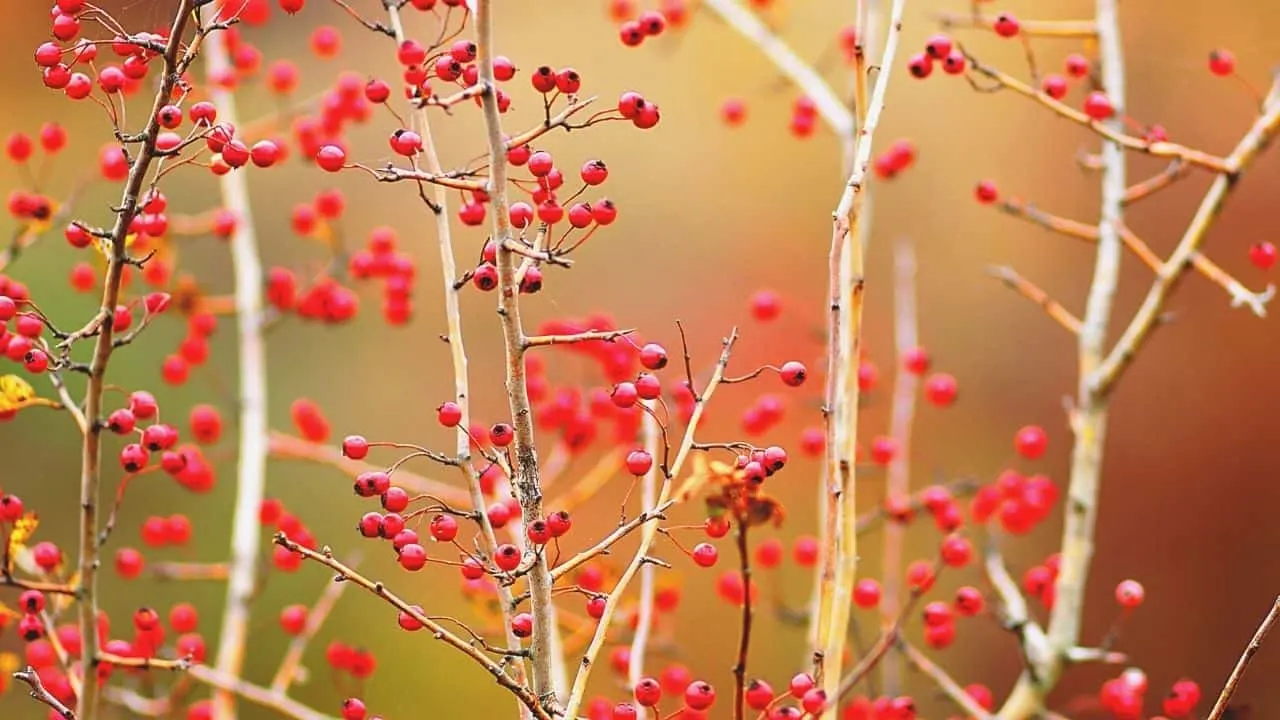
- The thorn apple tree, also called a Hawthorn tree, bears many little fruits called haws, which are prized as a marmalade element by some.
- The Hawthorn is a showy spring bloomer with some magnificent spikes.
Flower Trees With Spikes
Whenever you imagine spiky flower trees, the rose is perhaps the first that comes to mind.
On the other hand, many blooming species have spikes or spines, and many of them are attractive accents to parks, hedges, and other aesthetic projects.
Thorn Acacias
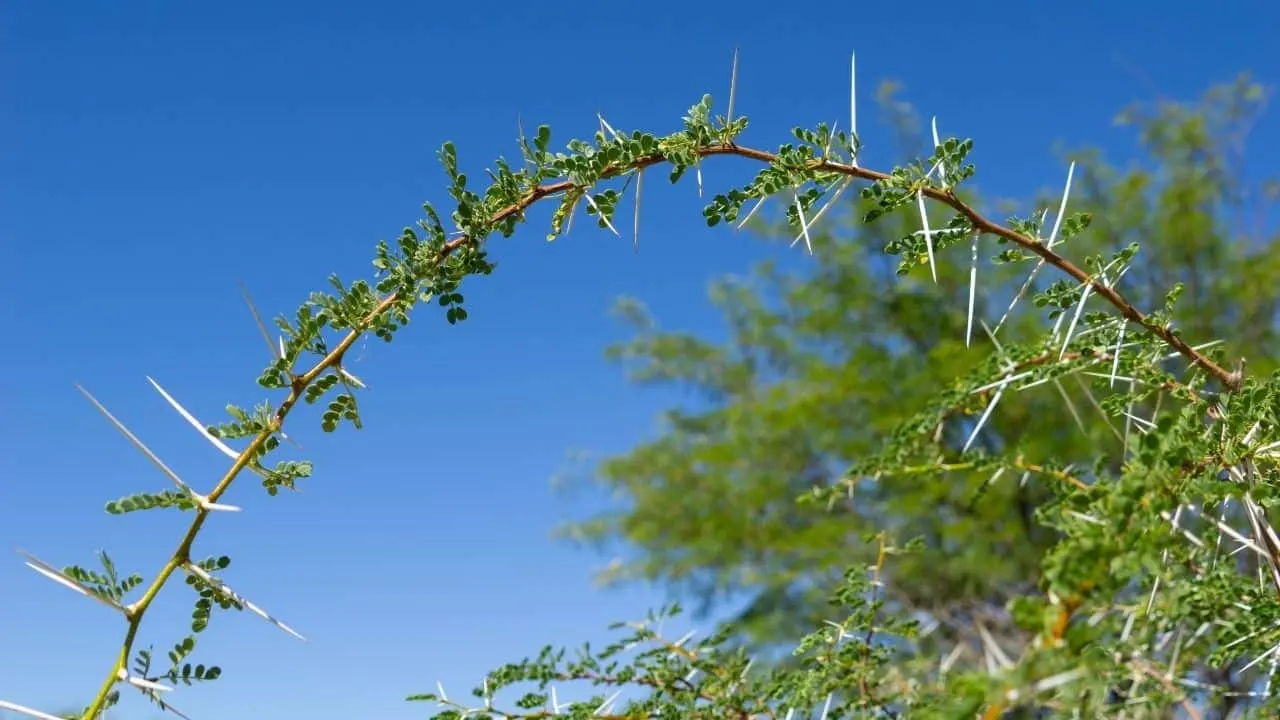
- USDA hardiness zone: 6 to 11
Acacia is a broad family with over 800 varieties of bushes, shrubs, and huge trees which can have a range of leaves, notably fern-like leaves and beautiful yellow blooms, as per Palomar University.
Acacias with pinnate leaves have sharp spikes that usually grow in groups.
Thorns are found in species such as the cat’s claw, and though botanists often use the words similarly, there are a few distinctions.
Spines are altered stems, while thorns are leaf stipules, and both can be exceedingly pointed. Acacia trees can be used for a range of things:
- Building hardwoods
Gum Acacia is used in
- Sweets
- Food
- Medicines
- Skincare
Crown of Thorn
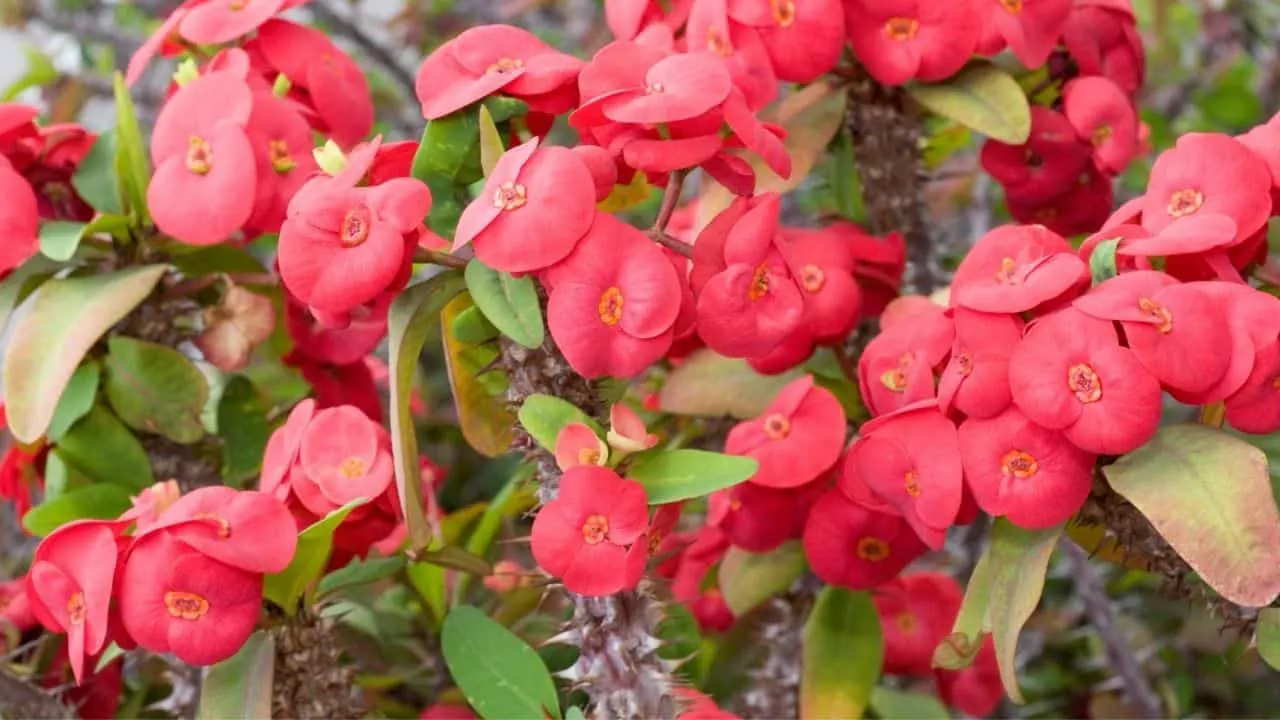
- USDA hardiness zone: 11 to 12
According to the University of Florida, the crown of thorns emerged in Madagascar and is particularly resistant to a warm environment.
This flower requires little watering and can thrive in direct sunlight, making it a favorite pick for florists.
It also has a long blossoming season. While the plant’s initial version had a lot of spikes, modern varieties have decreased the number of spikes and even turned them into a ridge-like projection rather than a pointed spike.
The blooms of the crown of thorns range in color depending on the species, such as:
- Deep red
- Pale pink
- Cream
Flowering Quince
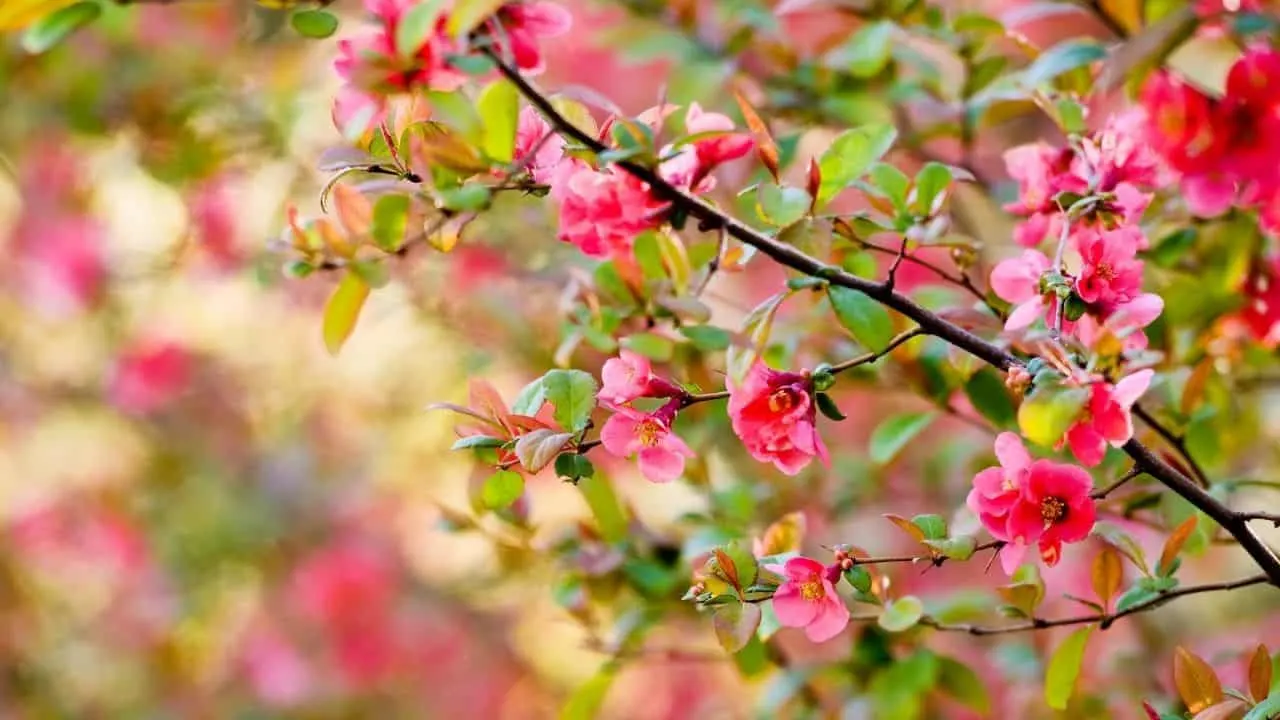
- USDA hardiness zone: Zone 5
The typical flowering quince is a thorn-producing plant indigenous to China, according to the University of Connecticut.
This prickly shrub can grow to be six to ten feet in height, with red, salmon, pink, or white blooms that bloom in April.
The prickly quince also yields apple-like fruit, which can be used to make jams. The quince grows best in full sun, although it can also be grown in moderate shade.
Trimming will aid in the development of lovely leaves that will complement your environment along:
- Borders
- Hedges
- Barrier walls
Precautions to Take When Pruning Spiky Trees
Protect Your Feet
Wear footwear or boots that are well-fitting and have non-slip bottoms that are suitable for this task.
Avoid wearing open-toed sandals for anything more than the tiniest of deadheading. Use steel-capped combat boots when using power tools.
Proper Gloves
Gloves protect your hands from cuts and improve your grasp. They’ll keep debris or germs from invading wounds in your skin and minimize scorching, fingernail injury, and sunburn.
Pick the correct gloves for the task: long-sleeved, heavy-duty ones for rose trimming; light ones for deadheading; and slip-on protection sleeves over short gloves for protection against spikes.
Protect Eyes and Nose
Use safety goggles to shield your eyes from the debris that might fly when you prune the trees.
Wearing a face mask should also be mandated in order to protect the rest of your face.
Conclusion
Above mentioned are some of the famous spike trees you will find. Although the names and colors look appealing, they have sharp pointed spikes on them to shield against the invaders.
It’s crucial that you care for the tree well when cultivating a spiky tree of your own. They can cause great damage to your pets if no precaution is taken.
However, if you know how to carefully protect and maintain these trees, you should certainly try to grow one in your backyard.

Daniel has been a plant enthusiast for over 20 years. He owns hundreds of houseplants and prepares for the chili growing seasons yearly with great anticipation. His favorite plants are plant species in the Araceae family, such as Monstera, Philodendron, and Anthurium. He also loves gardening and is growing hot peppers, tomatoes, and many more vegetables.


